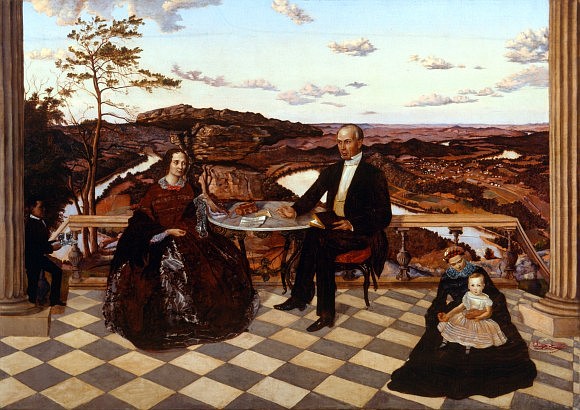(Editor's note: First of three parts)
Thousands of people travel the streets of downtown Chattanooga and, paused at traffic lights, glance up toward the prominent silhouette of Blue Cross Blue Shield. Many may not realize that the business is perched atop one of Chattanooga's most historic geographic markers, Cameron Hill.
A late 19th-century writer referred to the landmark as "standing like a majestic sentinel high above the Tennessee River at Chattanooga," then commented that Cameron Hill had been named for "one James Cameron, an itinerant Scottish portrait painter, who took up residence here in the 1850s." It's hard to imagine a skilled portrait painter deciding to settle in the Chattanooga of the 1850s - a city with just over 1,000 residents, but James Cameron did exactly that. And, in making that decision, Cameron's American Dream unfolded.
Within weeks of arriving in Chattanooga, Cameron met Col. James A. Whiteside. Or had Whiteside and Cameron met in an eastern city and their acquaintance prompted Cameron's move to Chattanooga? Historians still speculate about the relationship, but some facts are well known.
James Cameron painted the colonel's portrait soon after his arrival, and then Mrs. Whiteside sat for her portrait. Whiteside introduced the artist to his circle of friends, and several commissioned Cameron to create family portraits. Life - and finances - were looking promising for the portrait painter. Then, someone suggested that the Whiteside family should pose for a family portrait on the terrace of their Lookout Mountain home, near Point Park. The resulting portrait was one of the earliest paintings of the Tennessee River's Moccasin Bend with a prominent hill in the background. Col. Whiteside, pleased with the portrait he deemed to be "perfect," gifted the painter with "the great hill which back-dropped Chattanooga," an appropriate description since the town ended at the bottom of the hill."
According to a 1955 Chattanooga News Free Press article by Chattanooga historian Zella Armstrong, Mr. Cameron took possession of the prominent point, cleared some trees and built a cottage for his family. Residents began referring to the site as Cameron Hill. When, within three years, the U.S. Civil War erupted and Chattanooga became a strategic site, the Camerons moved to California. Their "hill" subsequently become important to the besieged Federal Army, which needed fuel for fires and lumber for the construction of breastworks. Cameron Hill, visible in some Civil War era photographs, was soon bare. A signal station was erected at the crown, and "war" messages were conveyed back and forth with a similar station on Walden's Ridge, called Signal Mountain in the Federal Army records.
After the war, a widowed Mrs. Cameron entered a claim for the timber harvested from her land. Since her husband was a foreigner and a noncombatant, she was awarded $30,000, a significant sum in the 1860s, and her ownership of the land was confirmed in the courts. Over the next decade, she would sell portions of the land until she divested all holdings.
Twenty years later, in November 1889, the headline in the Chattanooga Evening News announced a "Proposed Resort for Pleasure and Recreation" on Cameron Hill, while the accompanying article noted that "this historic point is now accessible by incline cars, which run every ten minutes and the trip from Pine Street to the top takes only five minutes."
But the incline was not the only new structure on Cameron Hill. A pagoda had been constructed featuring a dining hall on the first floor, 40 feet by 80 feet, that could be divided into two event areas, kitchens, offices, dressing rooms and several "viewing platforms." A second-story ballroom featured "circular ends and a gold-leaf accented ceiling," offering views of the "city and scenery and surrounding county for miles and miles" and "just the place for lovers to stop for a few minutes and dream." A third story was being added that would feature an observatory, accessible by elevator; it was proclaimed to be an ideal site for tourists who would not want to miss "the view of a lifetime."
The following year, Roland C. Cook, general manager, announced that the Cameron Hill Incline Company was moving forward with creating a beautiful park for musical performances, accessible by customers paying to ride the incline rail. Additionally, plans were being drafted for a resort hotel.
Things were looking up on Cameron Hill. What might the 20th century bring?
Linda Moss Mines, the Chattanooga and Hamilton County historian, is vice president of the executive board of the Charles H. Coolidge National Medal of Honor Heritage Center.
